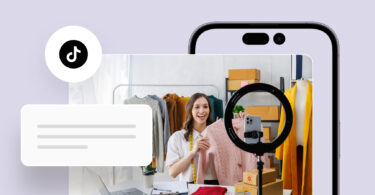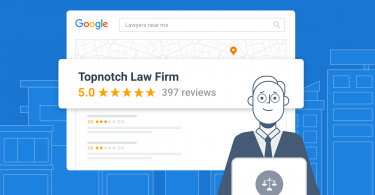Social media advertising has changed the marketing and advertising world. Social media grants unprecedented access by making it easier than ever for businesses to reach their target audience. With billions of active users across platforms, social media advertising offers a level playing field to reach a vast audience and build brand awareness. Especially given that social media statistics indicate that 75% of internet consumers use social media to research businesses, this is an opportunity you must use wisely.
In this blog post, we will explore social media advertising in depth. We will examine the different types of ads and discuss best practices for creating effective social media ad campaigns that drive results.
Table of contents
What is social media advertising?
Social media advertising helps businesses target users across social media platforms. It usually involves formats like sponsored posts, display ads, and video ads to reach a targeted audience on social media.
With social media ads, you can target specific demographics, interests, behaviors, and locations, making it a highly effective and efficient way to reach potential customers. Businesses can also track and analyze the performance of their campaigns, including metrics such as clicks, impressions, and conversions. This helps them optimize their advertising strategy and achieve better results.
Social media ads are an essential component of all major digital marketing campaigns. They prove to be an effective solution to build brand awareness, drive traffic, generate leads, and increase sales through targeted and measurable campaigns on social media.

Why invest in social media advertising?
Investments in social media advertisements have constantly been increasing for the past few years. If you run a business, it’s natural to wonder if it’s worth your investment. Let’s look at some of the widespread social media advertising benefits, and you’ll have your answers.
Brand awareness
Billions of active users exist across social media platforms, and advertising on social media can help businesses reach a larger audience than traditional methods. Engagement on social media ads increases the ads’ visibility and helps create a buzz around the brand.
Better targeting
Social media advertising allows for precise targeting based on demographics, interests, behaviors, and other categories defined by the business. This means that you can tailor their ads to reach their ideal audience. This targeted approach leads to higher conversion rates and, ultimately, better return on investment.
Valuable insights
Social media ads are a fantastic way for businesses to gain valuable insights.
It allows businesses to reach their audience with greater accuracy. By analyzing the performance of their ad campaigns, businesses gain insights into who their most valuable customers are, allowing them to adjust their advertising strategy accordingly.
Social media ads also provide data on ad engagement across their campaigns. You can analyze these metrics and understand which ad formats and messaging are most effective at engaging your audience.

Cost-effective
Finally, social media advertising is more cost-effective than traditional advertising channels such as TV, print, and radio. Social media ads offer targeted audiences, flexible budgeting, real-time optimization, and multiple ad formats.
The insights from social media platforms allow businesses to run ads that will bring higher leads and conversions. This ensures that overall customer acquisition costs are kept low and all campaigns are well-optimized.
Types of social media ads
Each social media platform offers various advertising types that businesses can leverage according to their requirements. Here’s a list of all social media ads available across popular channels.
Sponsored content
Sponsored content is a social media ad that appears in users’ feeds and looks like regular content. This type of content blends in with organic content to attract users. Sponsored content can be in the form of images, videos, or text.
Available on: Facebook, Instagram, Twitter, and LinkedIn.
Display ads
Display ads, which are images or videos, appear on the side or bottom of users’ screens while browsing a social media platform. Available on: Facebook, Instagram, Twitter, and LinkedIn.
Video ads
Video ads use content to promote a brand’s content, products, or services. Depending on the platform, these types of ads can be pre-roll ads (ads that play at the start of an organic video), in-stream ads, story ads, or reel ads. They can be set to autoplay or user-initiated, depending on the platform.
Available on: Facebook, Instagram, YouTube, Twitter, Pinterest, Snapchat, TikTok, and LinkedIn.
Carousel ads
Carousel ads allow businesses to showcase multiple products or services in a single ad. They may also take the form of a scrollable slideshow. You can include images, videos, or both in your ad design.
Available on: Facebook, Instagram, and LinkedIn.
Collection ads
Collection ads let businesses showcase their products in a visually immersive way. These ads usually are in the form of a full-screen experience, and they can include both images and videos.
Available on: Facebook, Instagram, Snapchat, and LinkedIn.
Sponsored filters and lenses
Sponsored filters and lenses use augmented reality technology to create an interactive user experience. They are usually face filters that feature the brand’s logo, unique branding style, new product, or service to engage the users.
Available on: Instagram, Snapchat, and TikTok.
Messenger ads
Messenger ads appear within the Messenger app. You can run these ads using images, videos, or carousels. Brands can use them to start conversations, run promotional campaigns, generate leads, and more.
Available on: Facebook, Instagram, Twitter (Direct messages), and LinkedIn(InMail).
Ads on stories
Ads on stories appear within the stories feature on social media platforms, wherever available. These ads can be in the form of images, videos, or carousels, and are considered to be immersive and engaging. Ads on stories are typically short and can be used to build brand awareness or encourage users to take a specific action.
Available on: Facebook, Instagram, and Snapchat.
Shop ads
Social media platforms allow businesses to create a digital storefront with their profiles to showcase their offerings. Businesses can use ads to promote their products within these storefronts, directing users to specific product pages or encouraging them to purchase.
These ads can appear in users’ feeds, stories, explore, and reels. They are great for businesses looking to drive sales and showcase their products to their target audience.
Available on: Facebook, Instagram, and Pinterest.
Social media advertising cost
While social media ads are an attractive option for growing your business, investing in a new channel may be overwhelming, especially with dynamic costs. Social media ad costs are more flexible than those of other traditional channels, but that is not necessarily bad.
In social media, you may pay based on your goals and results, which can help you run campaigns even on a tight budget.
The cost of advertising on social media platforms can vary depending on the platform, ad format, target audience, ad placement, bidding strategy, and competition.
Generally, social media advertising follows a bidding system in which you bid on the price you are willing to pay for the ads to be shown to your target audience. Depending on the ad format and platform, you bid for cost-per-click (CPC), cost-per-thousand-impressions (CPM), or cost-per-action (CPA), depending on the ad format and platform.
However, the actual cost can vary widely depending on the factors mentioned above. Set a budget and continuously monitor and optimize your campaigns to achieve the best results while staying within it.
Social media advertising strategy
We know quite a bit about social media advertising, but you may still have questions: How to advertise on social media? What are the processes involved in creating a social media advertising strategy and seeing it to completion?
Here are the general steps to follow to advertise on social media:
- Set your advertising objectives: Define what you want to achieve with your social media advertising campaign. This could be to increase brand awareness, drive website traffic, generate leads, or boost sales.
- Choose the right social media platform: Based on your advertising objectives and target audience, choose the social media platform(s) that best align with your business goals and audience.
- Define your target audience: Use the targeting options the social media platform provides to define your target audience. The better your targeting is, the sooner you will see results for your efforts.
- Select your ad format: Choose the type that best suits your advertising objectives and target audience. This could be image ads, video ads, carousel ads, stories ads, or any other ad format available on the social media platform.
- Design your budget and bidding strategy: Determine how much you can spend on your social media advertising campaign and set your budget accordingly. Choose your bidding strategy based on your advertising objectives and target audience.
- Create your ad content: Develop compelling content that reels in your target audience and motivates them to take the desired action.
- Launch your ad campaign: Once you have created your ad content, set up your ad targeting, budget, and bidding, and launch your ad campaign.
- Monitor and optimize your ads: Continuously monitor the performance of your ad campaign and make adjustments as needed to improve its effectiveness and achieve your advertising objectives.
Best social media advertising examples by platform
Facebook advertising
As an enormous social media platform, Facebook provides various advertising options that can benefit businesses of all industries and sizes. However, certain businesses can benefit more from advertising on Facebook, such as e-commerce, local, B2B, service-based, and app-based businesses.
Here are some ad techniques that do well on Facebook:
- E-commerce businesses can drive sales with Facebook’s product catalog and dynamic ads. Facebook’s targeting capabilities make it an excellent platform for local businesses to promote local deals and events.
- B2B businesses can target decision-makers and professionals based on job titles, company size, and other factors.
- Service-based businesses, such as law firms or financial advisors, can generate leads and connect with potential clients using Facebook’s lead-generation ads.
- App-based businesses can promote apps and drive downloads with Facebook’s app install ads.
Here’s an example of a carousel ad on Facebook from “Our Place” that highlights their products and allows customers to shop from an extensive range right from the ad itself.
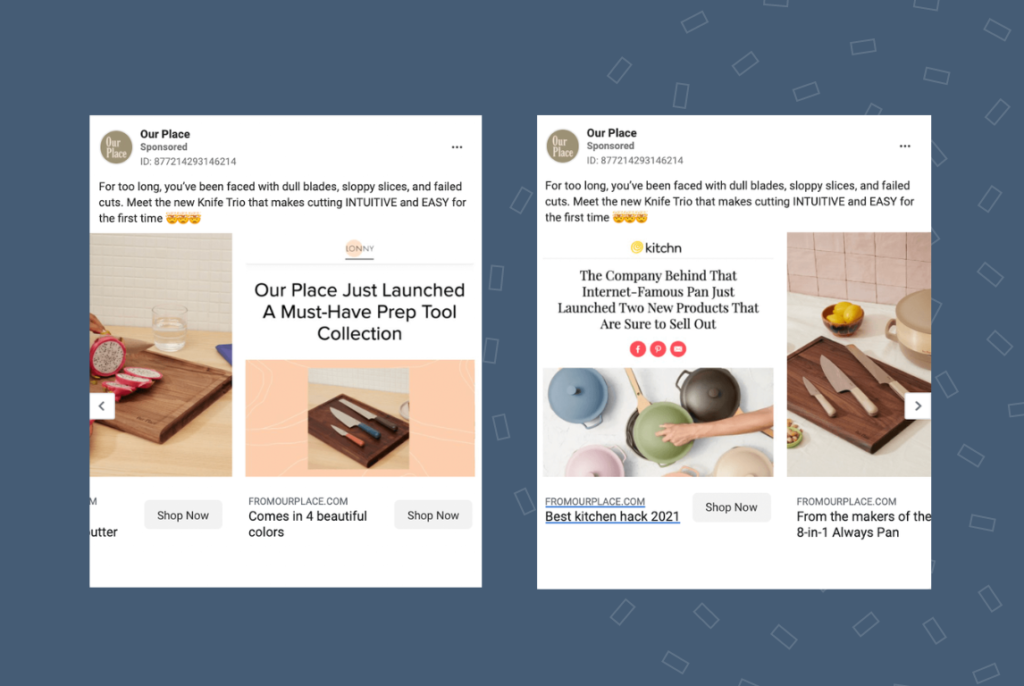
This brand awareness campaign from Hart tools is also a great example of a Facebook ad done right. The brand kept it simple and used engaging visuals to grab attention with a simple value proposition in the copy.
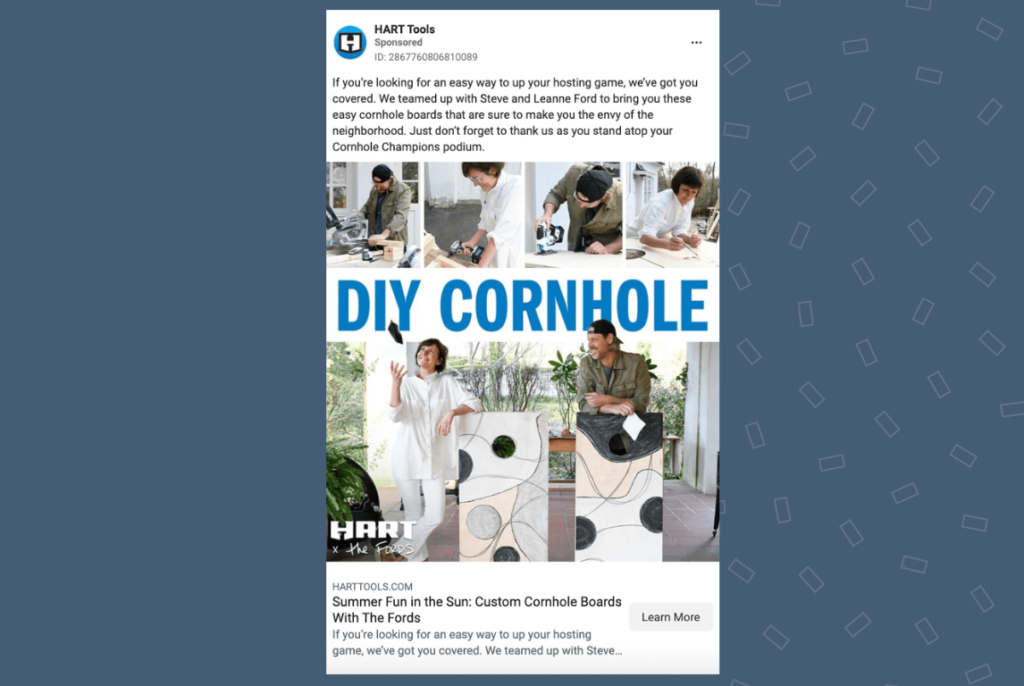
Instagram advertising
Instagram is a visually-driven platform that businesses can leverage to promote their brand to a large audience.
If you’re looking for ideas for your Instagram ads, here is a quick list of ideas for reference:
- E-commerce businesses can drive sales with Instagram’s shoppable posts and ads, while lifestyle brands like fashion, beauty, and fitness benefit from Instagram’s focus on visual and user-generated content.
- Travel businesses can showcase beautiful locations and attract potential customers through Instagram Stories and IGTV features.
- Food and beverage businesses can promote their menu items and specials using Instagram Stories, Reels, and sponsored posts.
- Instagram’s creative nature also makes it an ideal platform for promoting creative businesses like graphic design, photography, and advertising.
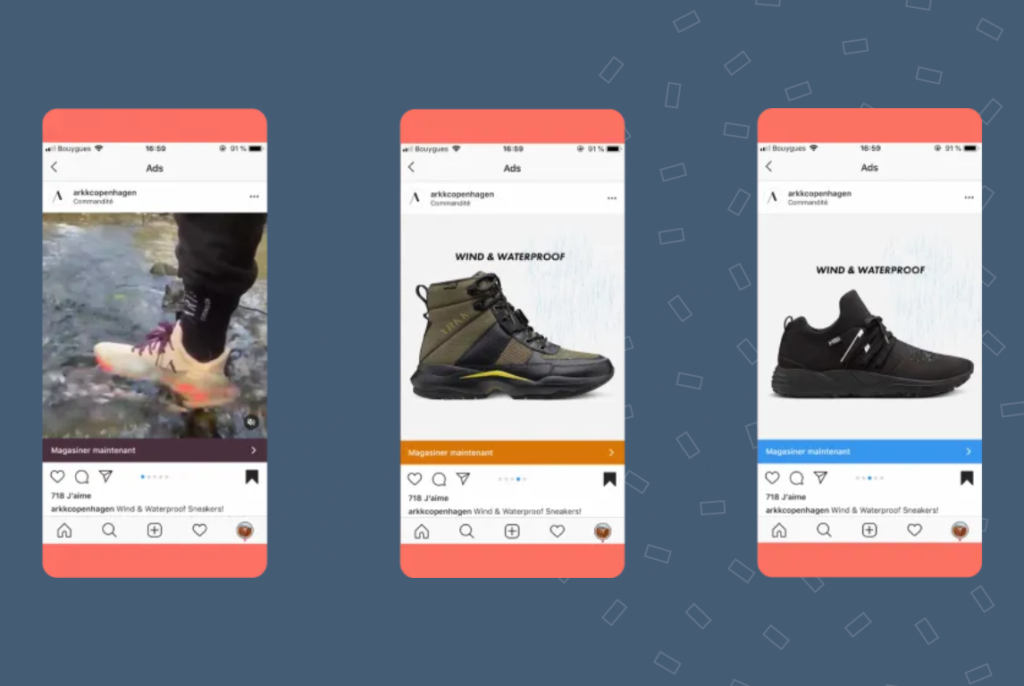
It’s the best of both worlds in this Instagram ad, with this high-end shoe brand using both images and videos in this carousel ad to capture its audience.
Twitter advertising
Twitter (now X) is a highly interactive platform that can benefit all industries’ businesses through its advertising features.
Some popular use cases for Twitter ads are:
- B2B companies can connect with potential partners or clients and share industry news and insights.
- Technology businesses can use Twitter to promote their products or services, engage with customers, and provide customer support.
- News and media organizations can utilize the platform to quickly spread breaking news, generate buzz, and promote their brand.
- Entertainment businesses can leverage Twitter to promote movies, TV shows, and other content to raise awareness around new releases.
- Finally, sports organizations can use the platform’s real-time nature to engage with fans, share news, and promote events using the platform’s realtime nature, which is particularly effective for sports-related content.
A hook and powerful visual on Twitter are essential for gaining your audience’s attention. In this Nissan example, we can see how the poll and powerful image have made it a successful piece of content.
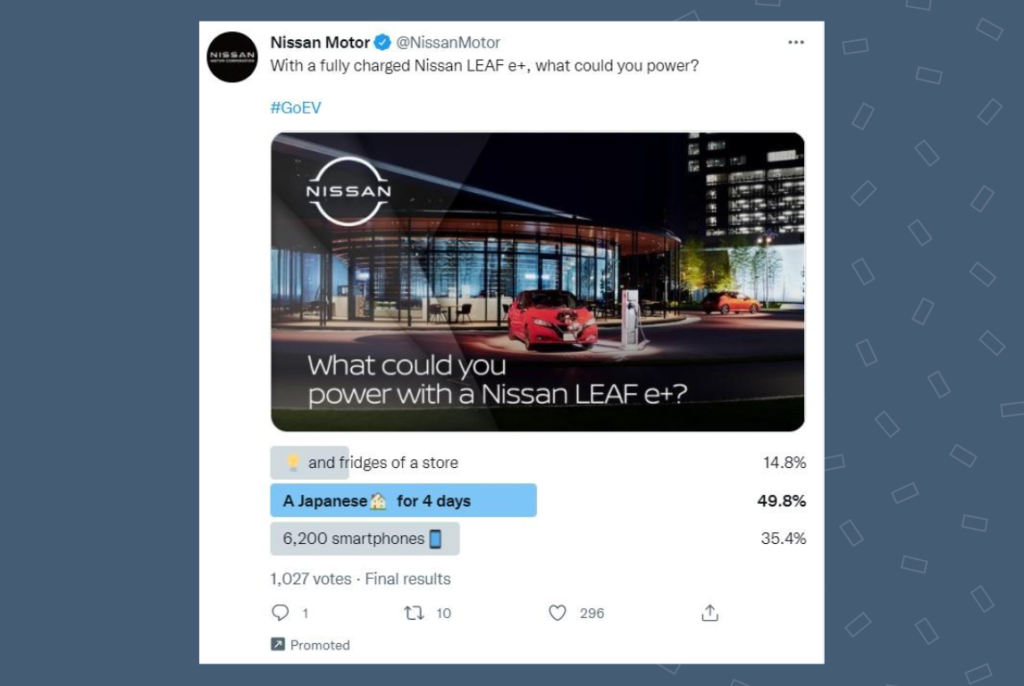
LinkedIn advertising
LinkedIn is a professional networking platform that businesses and professionals use.
Some examples of businesses that could benefit from advertising on LinkedIn include:
- B2B businesses that want to connect with other businesses
- Recruiting and staffing firms looking to find potential candidates
- Professional services firms like law or consulting firms
- Higher education institutions that want to connect with potential students
- Non-profit organizations looking to connect with donors, volunteers, and advocates
The LinkedIn audience looks for value in every brand interaction. This advertisement by MBAF piques the audience’s interest and reels them in with a few snippets from the report. This technique ensures the ad successfully drives clicks, website visits, and downloads.

TikTok advertising
TikTok is a platform favored by the younger audience, mainly Gen Z. It also helps businesses reach a large audience quickly. So, if you’re starting and want to boost brand awareness and capture the interest of your target base quickly, TikTok ads are the way to go.
Some popular use cases for TikTok ads are:
- Businesses that sell fashion, beauty, food, and beverage products can leverage TikTok to promote their products to a younger audience.
- Gaming and entertainment brands can engage with the platform’s large gaming community.
- Sports and fitness brands can create engaging content around workouts, challenges, and fitness tips.
- Brands offering education and e-learning products or services can leverage TikTok to create engaging content around learning tips, study strategies, and educational trends for younger professionals and students.
This ad by Liquid IV leverages content by other popular creators (created in collaboration with the brand) for higher engagement. Since it’s different from other advertisements, TikTok users are more likely to interact with the content. Don’t miss the brand’s response to individual comments that played a major role in the ad’s success.
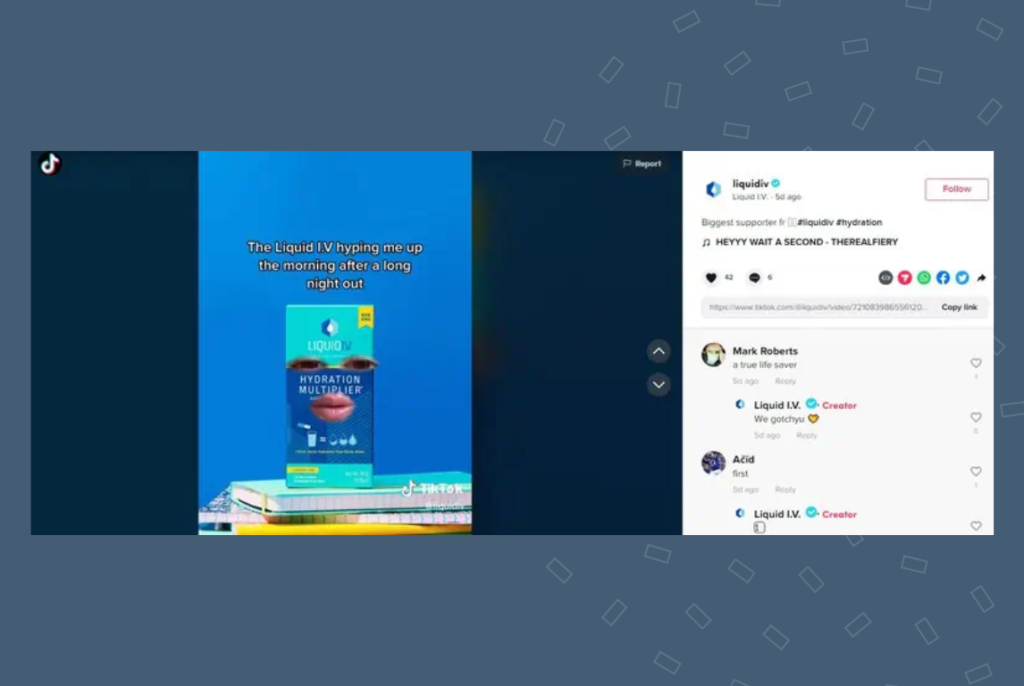
Snapchat advertising
Snapchat can be an excellent platform for businesses targeting a younger demographic. Businesses with a strong visual aesthetic, younger target audience, and from industries such as fashion, beauty, food, entertainment, and technology can benefit from Snapchat ads.
To attract Snapchat’s young user base, you can use images, videos, collection ads, and carousels on Snpchat to attract the young user base.
Consider the ad by Drinkfinity below. The clean aesthetics and intense product spotlight make it a beautiful ad on Snapchat.
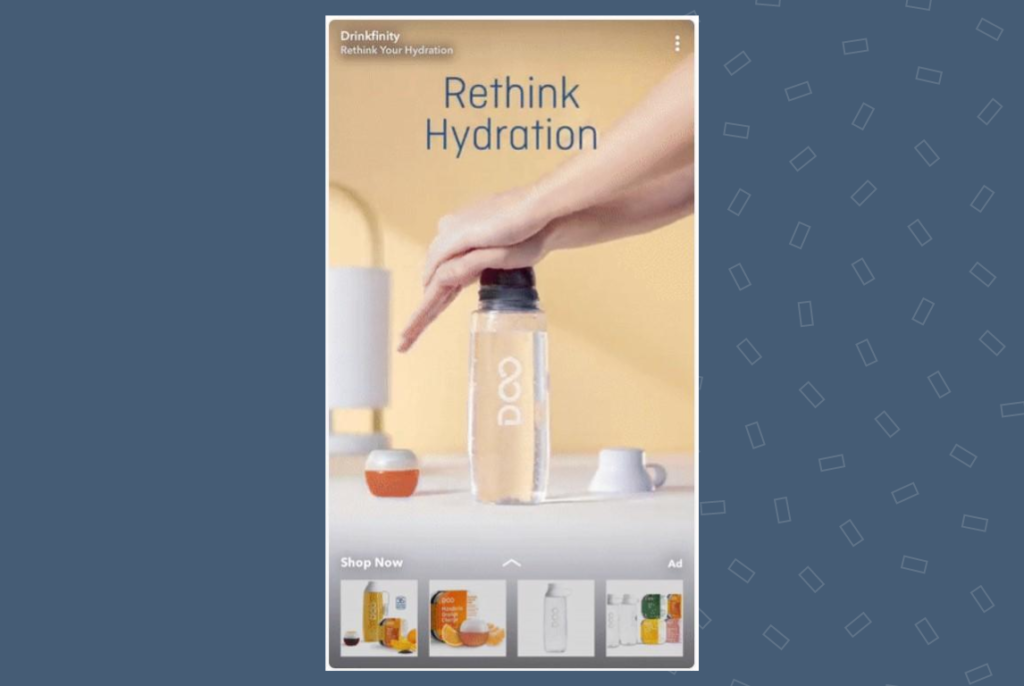
Pinterest advertising
Brands with strong visual appeal and aspirational quality, such as fashion, beauty, home decor, travel, and food, would benefit from advertising on Pinterest. As Pinterest has a largely female user base, businesses that target a predominantly female audience are also known to find success by running ads here.
Retail businesses that feature their products in a visually attractive design can use Pinterest ads to drive traffic to their websites and increase sales.
Take a look at this sample Pinterest feed below. These pins or images have a vital visual component and appeal to the audience that mainly uses the platforms. Designing similar ads can help you grow immensely on Pinterest.
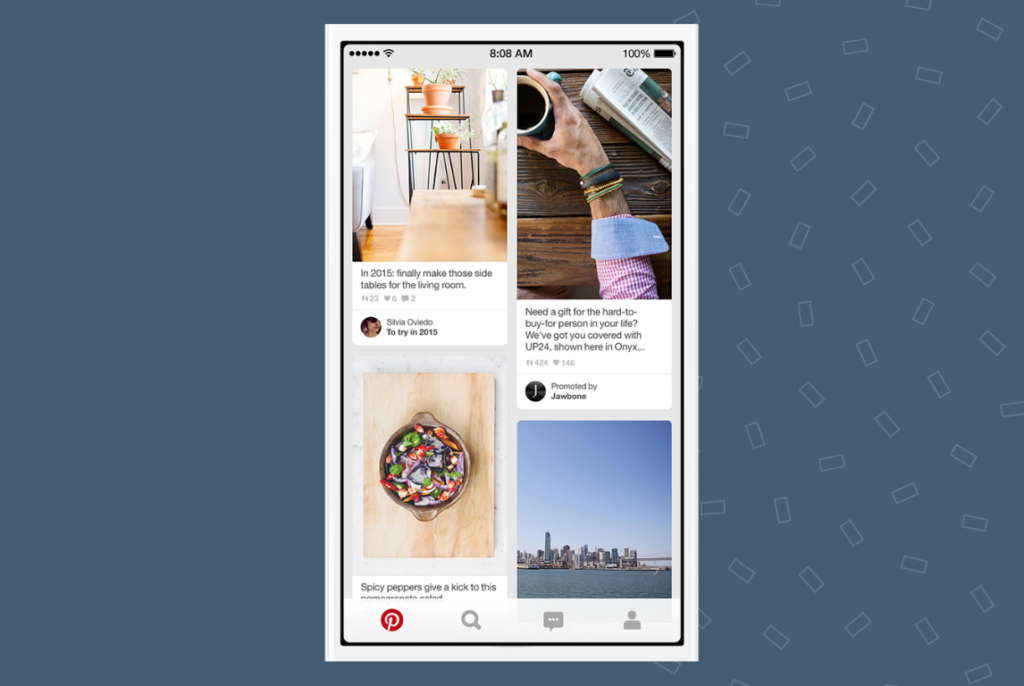
Tips for advertising on social media
The average person sees thousands of ads every day, and the majority of them are on social media platforms. For a business to successfully reach its target audience and make a significant return on its investment, its social media ads must stand out.
So, how do you create social media ads that grab everyone’s attention and compel them to click?
Here are a few tips for you:
Have a clear strategy
Begin with a well-defined social media advertising strategy that aligns with your overall business goals and is tailored to your target audience. Running ads on social media can be expensive and time-consuming, but it will only yield substantial results with a strategy.
Before launching any advertising campaign, make sure that you know the campaign goals, and target clicks, have a plan to engage with your audience, and are ready to experiment as the need arises.
Related read: Reinforce your brand value with a social media strategy
Design compelling and creative ad content
Creating visually appealing and engaging ad content that resonates with your target audience is vital. This grabs the users’ attention and is pivotal in stopping them from scrolling past your ad.
To design compelling social media ads:
Use high-quality visuals
High-quality images or videos are essential to grab the viewer’s attention and make your ad stand out. Ensure your visuals are clear, appealing, and relevant to your ad’s message.
Keep it simple
Don’t overcrowd your ad with too much information or too many visuals. Keep the design simple and easy to understand. The less time your audience spends decoding the message, the more likely they will click and interact further with your ad.
Use contrasting colors
Contrasting colors make your ad stand out from the platform’s background color. Choose colors you use are on-brand and complement your ad’s message. You can also choose colors that are trending, resonate well with your audience, and are sure to stand out.
Use typography effectively
Use typography to emphasize key messages and make your ad visually appealing. Ensure your font choice is easy to read and consistent with your brand’s identity.
Incorporate branding elements
Incorporate your logo and brand colors to create consistency across your ad and social media profiles. Place them prominently on your social media ads. This way, even when social media users do not interact with your ads, they still have a heightened awareness of your brand.
Optimize for mobile
Most social media users access the platform on mobile devices, so ensure that you optimize your ads for mobile viewing. Use clear, easy-to-read fonts within your designs, and make sure your visuals and text are sized appropriately.
Experiment with different ad formats
Each social media platform offers a variety of social media ad options for you to choose from. While a specific ad type may have worked for you in the past, it’s essential not to limit yourself.
Experiment with different ad formats, such as the carousel or video ads, to see what works best for your audience and message. Each ad format appeals to a different audience and can help you improve your brand’s reach and impressions and generate higher leads.
Engage with your audience
Social media users often use these platforms to communicate with their favorite brands. So, it’s essential to actively engage your audience on social media by responding to comments and messages.
This will help you build a strong connection with your followers and could increase loyalty.
Monitor the comments on your social media ads and ensure your team is ready to interact and help your audience promptly.
Frequently asked questions about social media advertising
The cost to advertise on social media varies depending on the type of ad, platform, industry segment, and advertising goal. You can check average cost benchmarks before advertising on social media for reference.
Yes, social media advertising is known to help businesses generate leads, improve brand awareness, influence purchase decisions, and connect with potential customers across platforms.
Social media advertising helps businesses find their target audience through these platforms and deliver their message by running paid ads.
Some of the best ways to advertise on social media are to run product ads, share reviews, create engaging video ads, and boost your well-performing content to reach a larger audience.
Grow your social media profile with Birdeye
Social media has become essential for all businesses to achieve their marketing goals. You can increase brand awareness, generate leads, drive traffic, and boost sales with the right strategy.
Birdeye Social enables you to manage all your social media accounts from a user-friendly dashboard. Here’s how it streamlines your workflow:
- Monitor everything: Stay on top of all your social media conversations in one place.
- Effortless publishing: Schedule and publish content across all your platforms with ease.
- Engage and build relationships: Foster meaningful connections through comments and messages with your audience.
- Never miss a mention: Track brand mentions and stay ahead of the curve.
- Amplify positive reviews: Automatically share positive reviews from customers and build trust.
- AI-powered content creation: Generate engaging social media ads with suggested emojis, hashtags, and images using Birdeye’s AI.
If you’re ready to take the next step towards social media advertising success, watch our free demo to learn how Birdeye can help you grow your social media presence.
Scale your social media advertising strategy with powerful tools from Birdeye
Want to see the impact of Birdeye can have on your business? Watch the Free Demo Now.
This blog post is part of our Social Media Management Guide
Originally published



